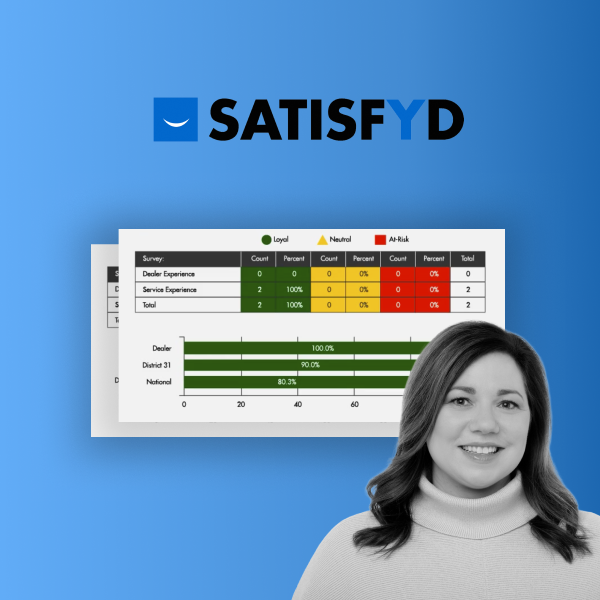Indeed, things have been looking good for the heavy equipment industry for several years now, but how can you ensure your company cashes in on the strengthening boom in heavy equipment in the coming years? Here are three steps to increasing your heavy equipment sales:
Step one: Know your customers
In order to know your customers intimately, you need to have their historical data at the tip of your fingers. You want to know what machines they’ve purchased in the past, at what discounts, and any other data that correlates directly with properly calculating your Gross Profit Margin. You also need access to what additional parts they have purchased, and how often.
By fostering this data and empowering your sales reps with access to these analyses or reports, your sales team can create a much better customer experience by knowing the customer instead of guessing their needs. Having this insight readily available will signal to your customers that you care about them, understand their needs, and can provide them the support they need exactly when they need it.
Additionally, many of the modern heavy equipment pieces out in the field today come fitted with sensors that collect a tremendous amount of customer usage data. Capturing, analyzing, and understanding this data will provide invaluable insight to Sales and Services reps who are looking to improve the customer experience.
Understanding usage will help users better know their customers and be able to better assist them next time they need something, increase your sales and services opportunities, and be proactive rather than reactive, which will give your dealership a competitive edge against the competition who is not focused on the customer experience through business intelligence and analytics.
Customer data that is easily shared between departments, and even distributors, also helps maintain a singular customer experience. When you speak to a customer on the phone, you should be able to pull up their past orders, current projects, and most commonly used pieces of equipment. This fosters loyalty and presents an overall better customer experience when you can anticipate their needs before they can.
Step two: Increase the sale value
Don’t just sell products; sell value. The usage data mentioned above is just one example of data that can be harnessed to offer a better experience for your customers and a more lucrative sales or services opportunity for your company. Insight into usage opens the door to selling data and fleet management. With the right tools, you can easily monitor the health of your customers’ equipment in the field in user-friendly reports and dashboards. This way, you can alert customers when a machine needs routine maintenance, for example, taking a tremendous amount of management off their plate.
A BI and Analytics tool designed for the heavy equipment industry will help you measure and monitor all of the most important KPIs regarding your customers. One such KPI that is ripe with sales opportunity is the Market Basket Analysis.
This KPI helps you understand what products customers routinely buy together. The Market Basket Analysis arms sales representatives at dealerships with the data they need to recommend add-ons to customers at the time of sale.
This type of analysis is a common tool for many retail eCommerce sites, such as Amazon. Consider Amazon’s “frequently purchased together” combinations below every product description. This can be incredibly useful for heavy equipment dealerships as well.
If a customer is renting an excavator, the Market Basket Analysis may show that most customers who have rented excavators also purchase attachments, belts, safety equipment such as hardhats, earplugs, and goggles over the course of the job. The sales rep could then offer a discount to buy those at the time of rental sale as a bundle, resulting in an increase of the initial sales at the time of purchase or rental. It also promotes a positive customer experience because you are looking out for their best interests by offering add-ons they will need at some point, thus saving them a trip back to pick up that attachment they forgot.
Another application of Market Basket Analysis lies within the Marketing Department. This metric mines data on customer needs, including those who have not been heard from in a while. With a better understanding of customer needs, customers can be enticed back to the business.
Step three: Understand the trends
Increasing your sales goes beyond customer insight. You should also maintain a comprehensive understanding of your company’s overall performance versus other manufacturers in the industry. Monitoring the Percentage of Industry Sales or Market Share (or PINS as Caterpillar dealers refer to it) will help you measure improvements in your company’s competitive position in the market.
To do this, utilize an analytics tool that combines internal sales data with third-party sales data. This is often provided by the manufacturer or third-party data provider, such as EquipmentWatch or UCC data from EDA. This data will help you identify what is important to the heavy equipment industry as a whole, not just your particular customers. It will also signify where your company is falling short when benchmarked against the competition, so you can focus on improvement.
This type of in-depth knowledge is only possible with a comprehensive BI and Analytics solution designed specifically for the heavy equipment industry. You shouldn’t have to go digging for KPIs or weeding through spreadsheets and complicated reports to cobble together the information you need. The right analytics for the heavy equipment industry will deliver common-sense dashboards directly to your desktop, email, or mobile device so you can get the insight you need at a glance.
The KPIs mentioned above are just the start of what your company should be monitoring to foster a data-driven environment to increase sales of your heavy equipment products.
Download our guide to see the other important KPIs for the heavy equipment industry, and how you can take advantage of the data at your fingertips: Better Insight into Your Entire Heavy Equipment Business.




